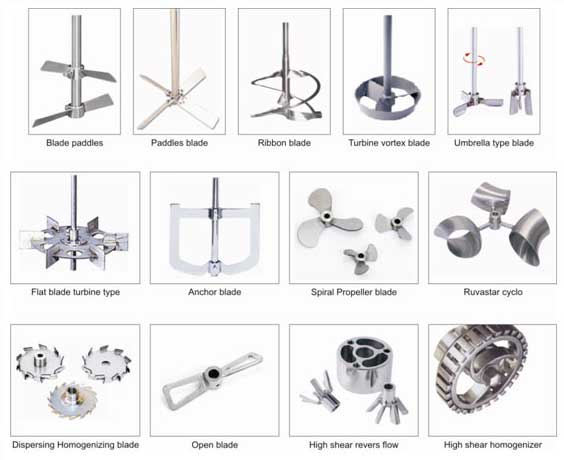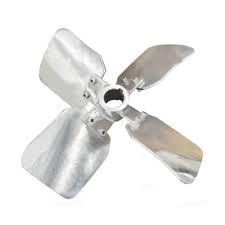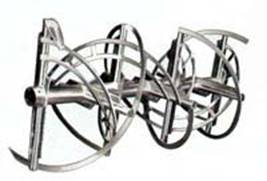Types of Agitators

Type of agitators used in reactors
Abster Equipment is a manufacturers and suppliers Types of Agitators, Stirrer. These mixers are manufactured with the highest quality materials. The Agitator Stirrer is basically designed to agitate and mix several types of viscose liquids. We offer a variety types of Agitators Stirrer. We design and manufacture a wide range of liquid agitators and slurries for all processes in the pharmaceutical, chemical, food, cosmetic and similar industries.
To meet your mixing needs, We are one of the prime Agitator Stirrer Manufacturer In India. We offer complete fluid mixing solutions for all your process needs. Side Entry Mixer, heat exchangers, high speed dispersers,Hydraulic High speed disperser reactor pressure vessels and Agitator Stirrer in India.
Anchor Agitators: Anchor Agitators consists of a shaft and an anchored propeller that can be mounted centrally or at an angle. It is mainly used in reactors.

Paddle Agitators: Paddle Agitators is one of the most important types of agitators whose blades reach the tank wall. A Paddle Agitators is used where a uniform laminar fluid is required. It implements heavy-duty mixing and proves to be an excellent device for low speed. Its simple structure makes the machine easy to manage.

Radial Propeller Agitators: The radial agitator consists of a propeller similar to a marine propeller. They consist of two to four blades that move in a screw-like manner, pushing the material parallel to the shaft for agitation.

Propeller Agitators: It is an axial flow high performance mixer consisting of three blades mounted on the main shaft. They are ideal for mixing low viscosity and medium viscosity fluids and improving uniformity. Propeller agitators are popular for simple mixing jobs.

Turbine Agitators: Turbine Agitators are widely used to perform all types of mixing operations and to handle fluid and liquid or gas reactions of various viscosity. Its ability to produce high radial flow facilitates the dispersion operation.
Helical Agitators:
These agitators have blades with a twisting mechanism, just like the threads of a screw. The curve results in strenuous movement of the fluid to be agitated. Spiral mixers are best suited for mixing viscous liquids.

top entry mixer is designed for stirring low viscosity material or heavy material. It manufactured with high strength and hard surface gear transmission. Gear drive agitators utilize oversize tapered roller bearings on the output shafts to provide excess capacity to adjust the loads.

Helical Agitators: These agitators have blades with a twisting mechanism, just like the threads of a screw. The curve results in strenuous movement of the fluid to be agitated. Spiral mixers are best suited for mixing viscous liquids.

Applications of Agitator Stirrer
-
Seed,Bump or Innoculum tanks
-
Fermentation Products Holding
-
Antibiotics
-
Medicants Antiseptics
-
Cosmetics And Perfumes
-
Insecticides & Disinfectants
-
Compounds & General Processing
-
Shampoo
-
Shower Gels
-
Creams And Lotion
Types of agitators models, application and comparison:
| Agitator models | Application | Advantages | Disadvantages |
Paddle:
|
|
|
|
| Counter-rotating paddles | Paste mixing |
|
|
| Tumbling | Blending | Paste and viscous material mixing | Not suitable for fluid solutions |
| Disk and cone | Polymers and dispersion preparation | Viscous solution mixing with 60 revolutions per second | Paste mass cannot be handled |
| Free shaft suspension | Sugar processing | Suspension, Thickening operation | High power requirement |
| Impeller type | Emulsion preparations |
|
Not for viscous materials |
Turbine agitator
|
Liquid and gas reactions |
|
Only for less viscous liquid below 15 to 20 Ns/m2 |
Slotted rotary
|
Powders and cosmetics |
Unique particle size and homogeny product formation |
|
Screw
|
Food and snack processing | Homogenization of high viscous materials | Not suitable for miscibility operations |
Helical
|
Polymer and paints processing | Handles viscoelastic liquids that are more than 20 Ns/m2 | Less radial flow patterns |
| Gate | Blending operations |
|
Not suitable for gas to liquid operations |
Anchor
|
Milk and fat processing | Efficient heat exchange between the reactor walls and reaction mass (fluids) |
|
| Propeller |
|
|
|

